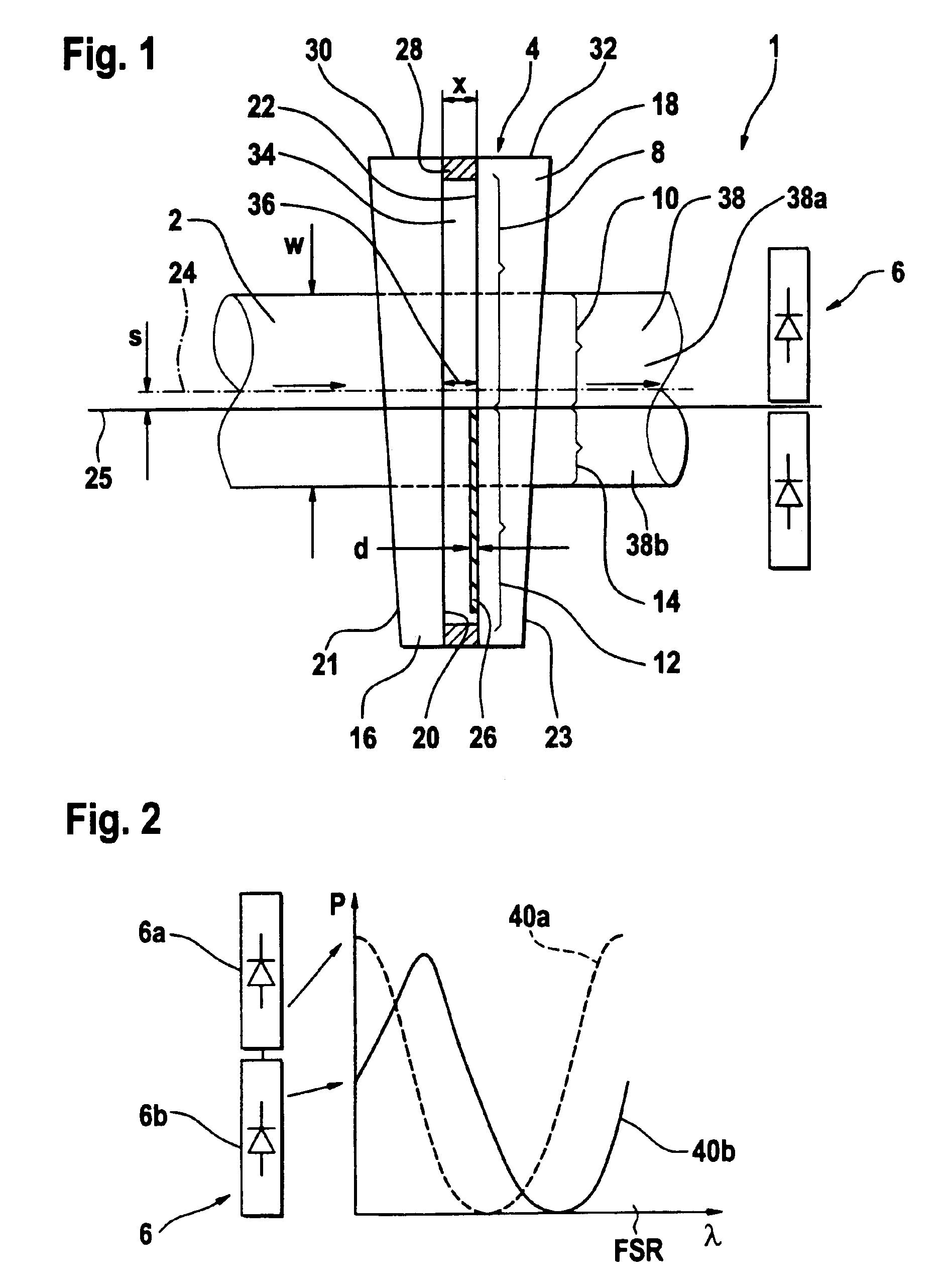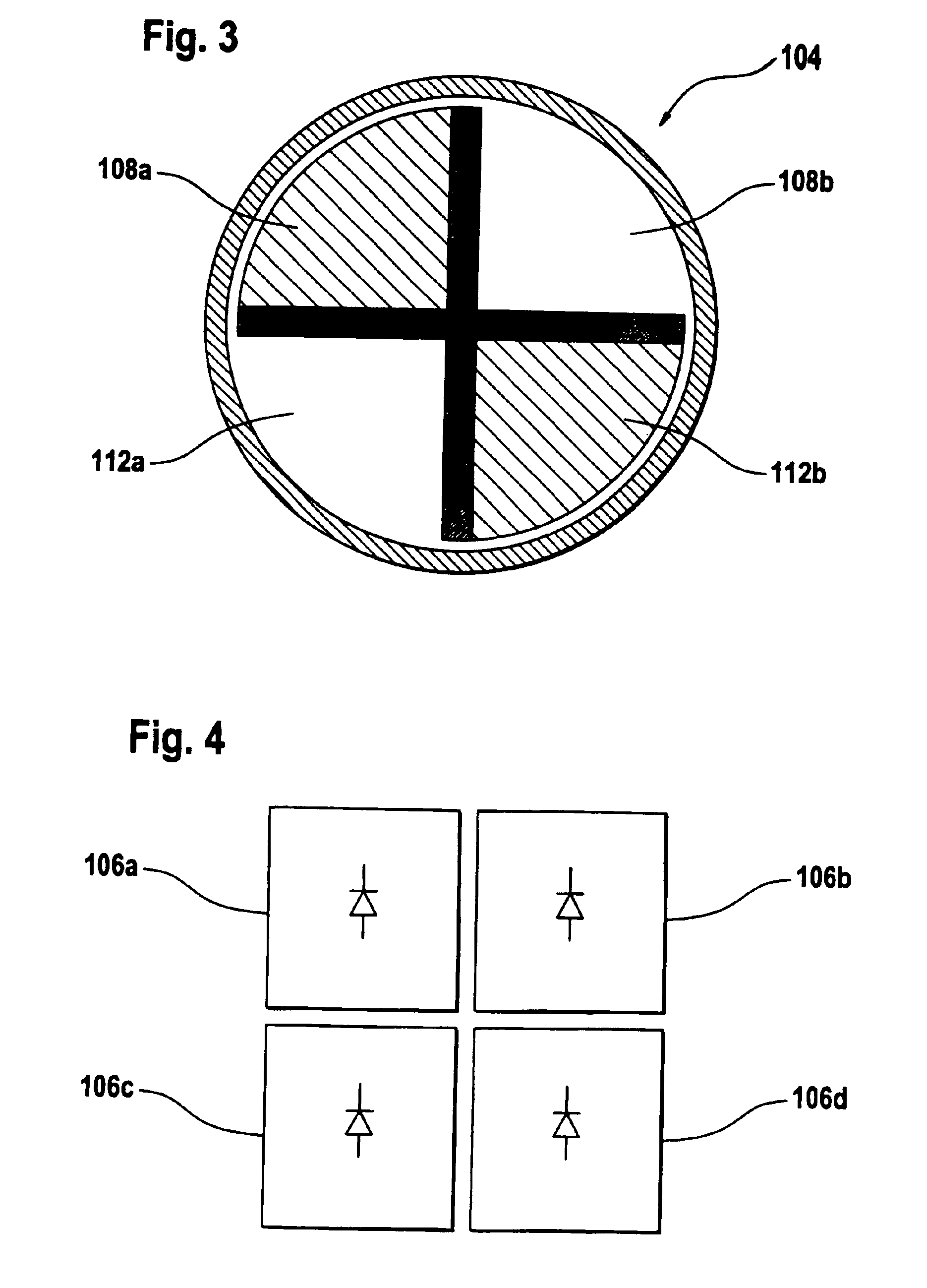Wavemeter having two interference elements
a technology of interference elements and wavemeters, applied in the field of wavemeters, can solve the problems of expensive and very precise measurement of wavemeters, and achieve the effect of improving the accuracy and accuracy of measurement results
- Summary
- Abstract
- Description
- Claims
- Application Information
AI Technical Summary
Benefits of technology
Problems solved by technology
Method used
Image
Examples
Embodiment Construction
[0030]Referring now in greater detail to the drawings, FIG. 1 shows a wavemeter for measuring a wavelength λ of an optical laser beam 2 having a width W. The wavemeter 1 comprises an interference element-4 (e.g., a split elalon 4), a power detector 6 detecting the optical power of the laser beam 2, and an allocator (not shown) allocating a wavelength to said detected optical power.
[0031]The split etalon 4 has a first section 8 providing a first path for a first part 10 of the light beam 2, the first path having a first interference—effective optical length x. The split etalon 4 has a second section 12 providing a second path for a second part 14 of the light beam 2, the second path having a second interference—effective optical length l=x−d, where d≈λ / 8 of the expected wavelength λ of the laser beam 2. Since the expected wavelength λ in optical communication networks is typically 850-1650 nm the value of d can vary between 100 nm and 210 nm when the wavemeter 1 of FIG. 1 is used as ...
PUM
 Login to View More
Login to View More Abstract
Description
Claims
Application Information
 Login to View More
Login to View More - R&D
- Intellectual Property
- Life Sciences
- Materials
- Tech Scout
- Unparalleled Data Quality
- Higher Quality Content
- 60% Fewer Hallucinations
Browse by: Latest US Patents, China's latest patents, Technical Efficacy Thesaurus, Application Domain, Technology Topic, Popular Technical Reports.
© 2025 PatSnap. All rights reserved.Legal|Privacy policy|Modern Slavery Act Transparency Statement|Sitemap|About US| Contact US: help@patsnap.com



